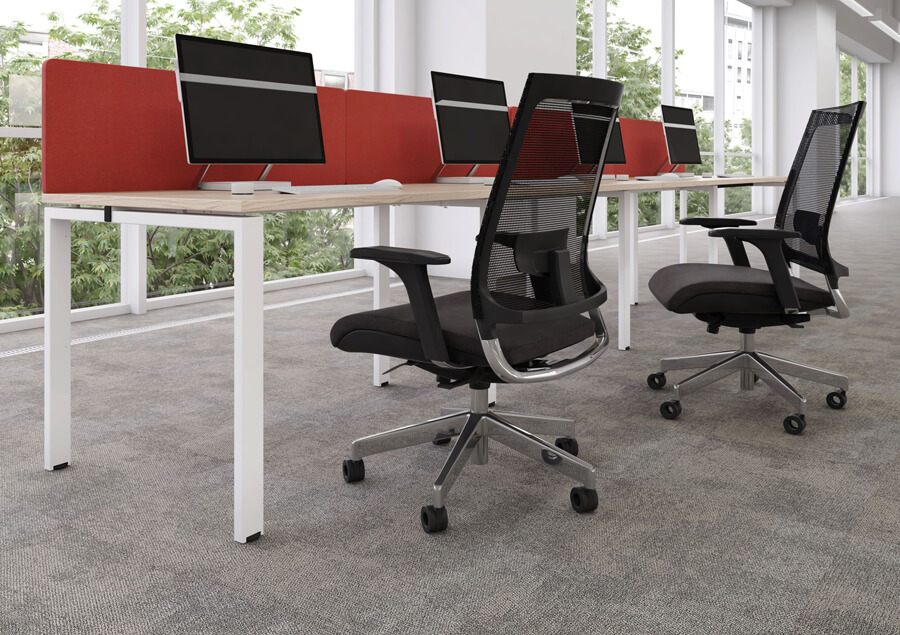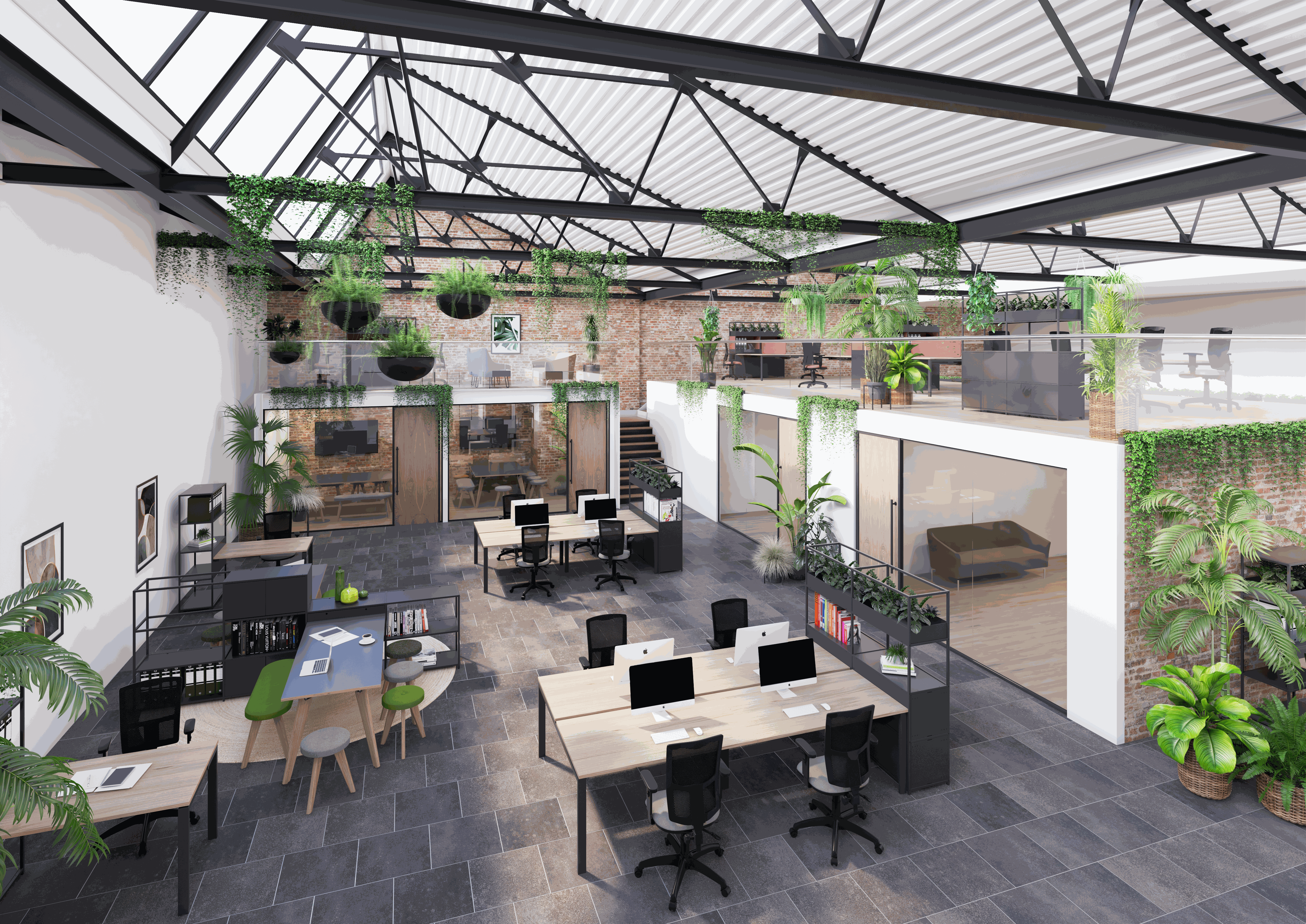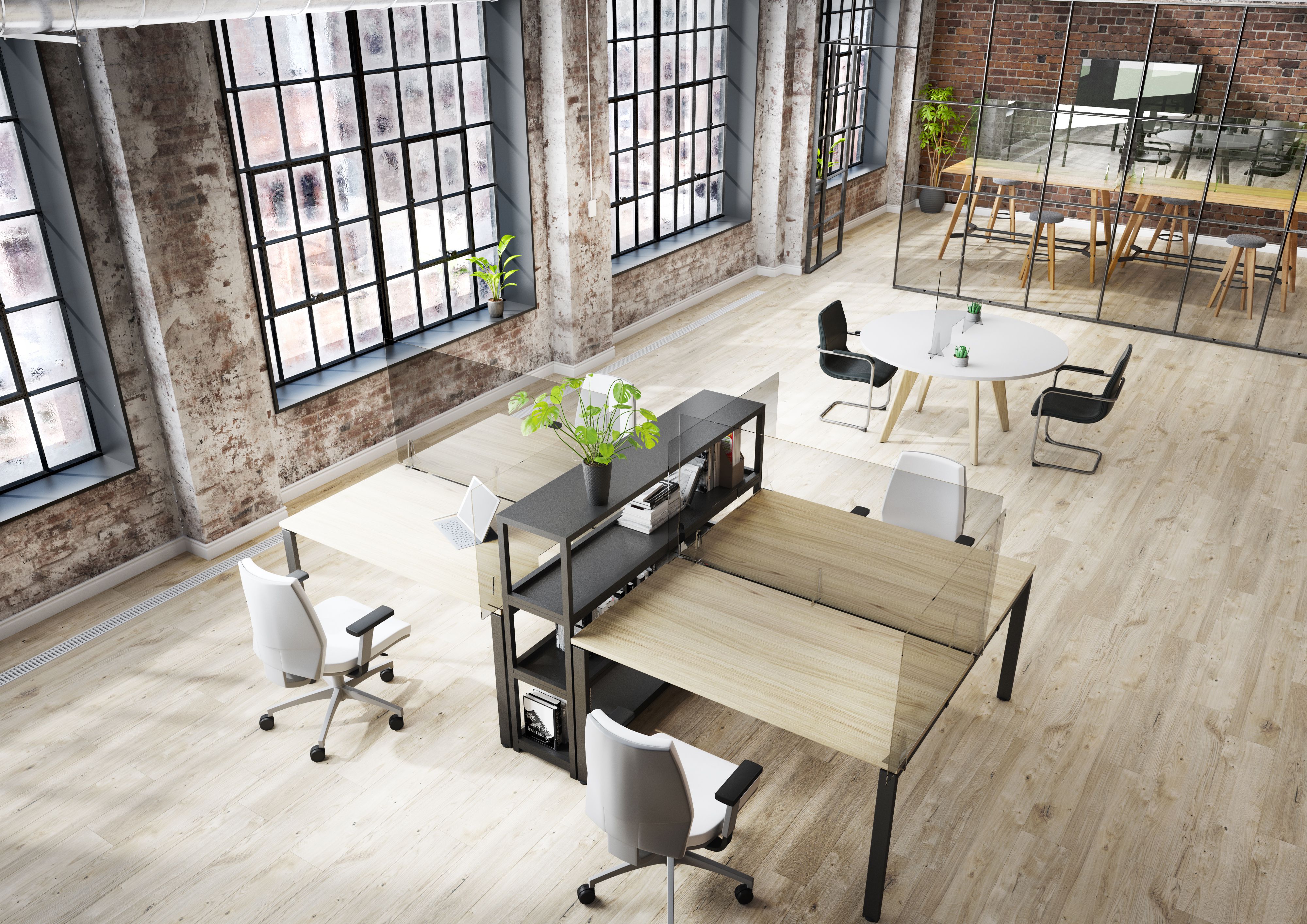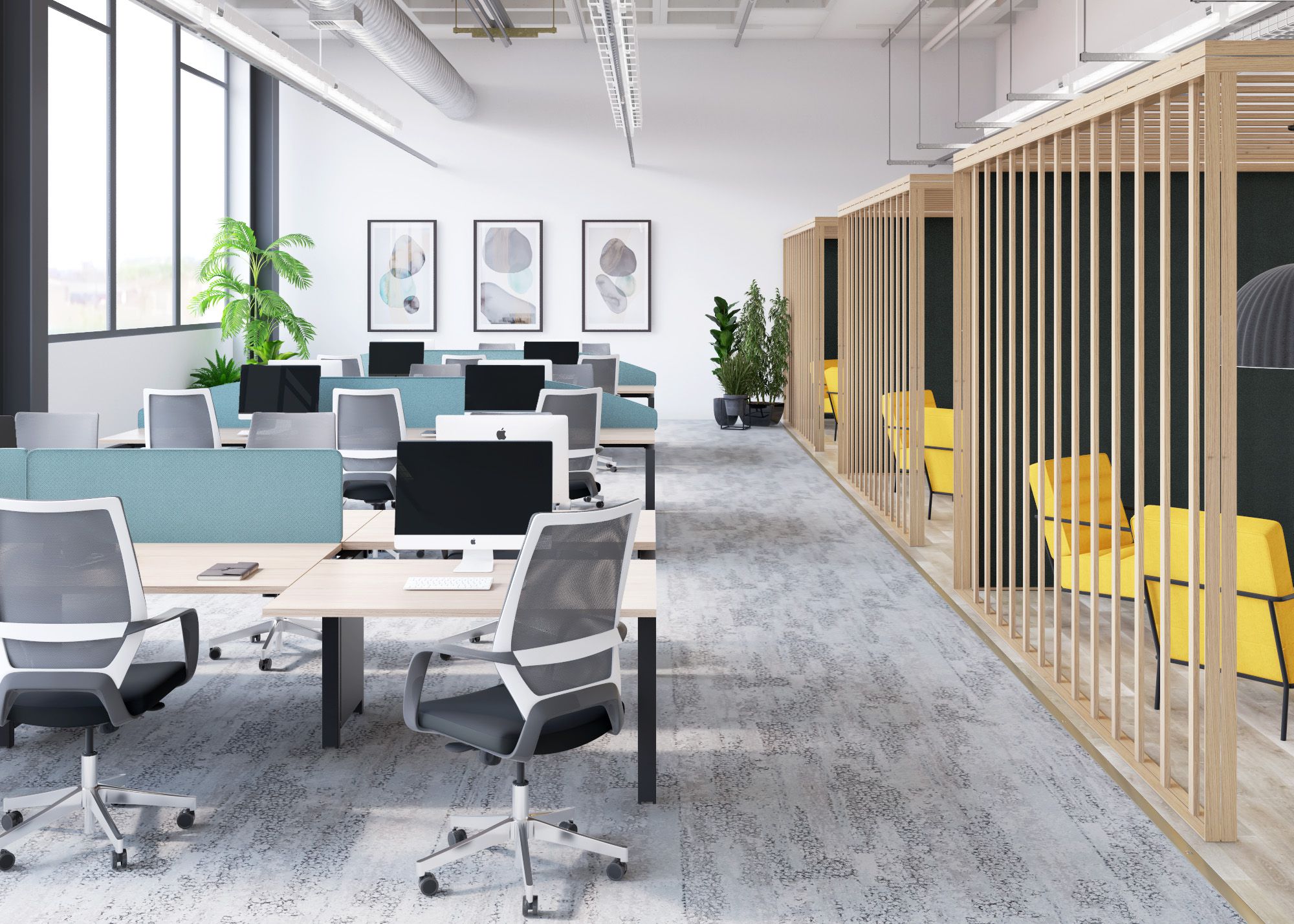Good lighting is vital in the workplace and it’s important to get it right as it has a greater impact on an employee’s productivity and well-being than you may realise.
Good lighting includes both natural and artificial light, which all working environments need in order to keep and maintain a happy, healthy, and productive working environment.
NATURAL LIGHT
Being exposed to natural light is important for us humans. We thrive on natural light but have created a world in which we spend much of our time indoors where access to it is limited. Natural light is known to boost energy and serotonin levels, something especially important for those working in the workspace. Studies have shown a significant difference between employees who work under artificial light and those who work under a mix of artificial and natural light, with a 40% increase in productivity for those taking in the natural daylight during their working hours.
How to utilise Natural Light in Workspaces:



ARTIFICIAL LIGHT
Where natural light is harder to come by, other lighting solutions can be built-in through the right kind of product procurement. LED lighting especially offers benefits in both sustainability and wellbeing, using less energy and lasting longer than classic and fluorescent light features, while also most closely mimicking the quality of natural light.
How to integrate Artificial light into workspaces:



Lighting Solutions for Remote Working:
With the home office such an integral part of our working lives, lighting is a key part of an ergonomic home set-up. Where possible, make sure that you work by a window, either facing it or at up to a ninety-degree angle, in order to maximise the wellbeing benefits of natural light and minimise screen glare. It’s best to also have a warmer desk light available, so that you can easily switch between the kind of light you need at any particular moment for certain tasks.

